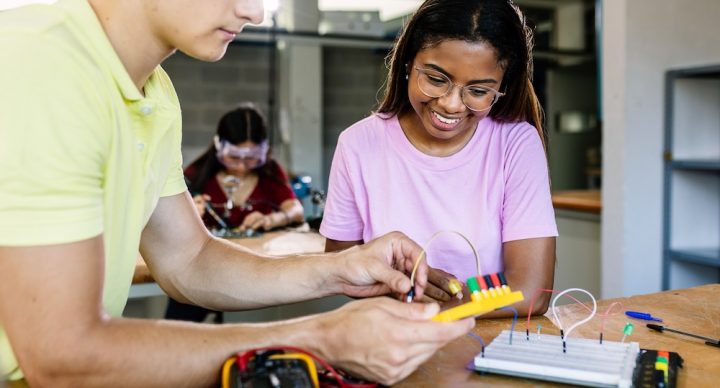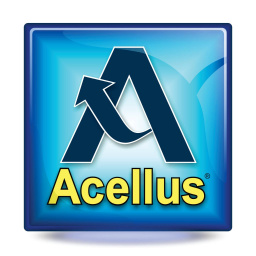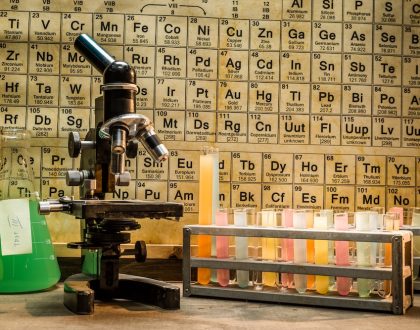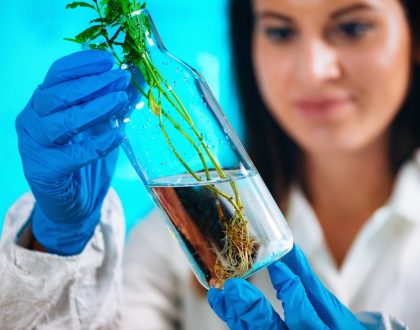Integrated Science 3

Course Features
Course Details
Course Overview
The Integrated Science 3 Course offers an advanced exploration of life, earth, and physical sciences, fostering a deep understanding of scientific principles and their real-world applications. Through hands-on labs, interactive lessons, and interdisciplinary connections, students will investigate complex systems, from biological classification and genetics to astronomical phenomena and physical forces. The course emphasizes critical thinking, scientific inquiry, and problem-solving, preparing students for high school science by connecting theoretical concepts to practical challenges.
 This course was developed by the International Academy of Science.
Learn More
This course was developed by the International Academy of Science.
Learn More
Scope and Sequence
Unit 1: Foundations of Scientific Inquiry In this unit, students will establish a robust foundation in scientific inquiry by mastering essential skills and tools. They will explore the branches of science, acquire basic scientific vocabulary, and learn the metric system for precise measurements. Students will also delve into the scientific method, understand the use of microscopes, and prioritize lab safety through lessons on safety rules and symbols. A hands-on Chemical Color Lab will reinforce their ability to apply scientific processes safely and effectively, equipping them with the skills needed for advanced scientific exploration. Unit 2: Classification of Life This unit introduces students to the organization of living organisms through the study of biological classification. They will learn the principles of classification, explore the six kingdoms of life, and examine the characteristics of viruses, monerans, and protists, including animal-like, plant-like, and fungus-like protists. A Classification Lab will provide practical experience in categorizing organisms. By studying these concepts, students will develop an appreciation for the diversity of life and the systems used to organize it. Unit 3: Genetics and Reproduction In this unit, students will explore the principles of genetics and reproduction, uncovering the mechanisms that govern heredity. They will learn about the history of genetics, the role of probability in heredity, and the structure and function of DNA. Lessons on the phases of meiosis and asexual reproduction will provide insight into how genetic information is passed on. Through these studies, students will understand the fundamental processes that drive genetic variation and the continuity of life. Unit 4: Earth’s Dynamic Processes This unit focuses on the geological forces that shape Earth’s surface, emphasizing plate tectonics and related phenomena. Students will learn about constructive and destructive forces, methods for studying Earth’s interior, and the role of fossils in understanding the past. They will explore divergent, convergent, and transform plate boundaries, types of stress, fault formation, earthquakes, and seismic waves. By examining these processes, students will gain a deeper understanding of Earth’s ever-changing geology. Unit 5: Earth’s Motion and Seasons In this unit, students will investigate the astronomical and physical principles governing Earth’s movements and seasonal changes. They will learn how Earth moves, the causes of seasons, and the interplay of gravity and motion, including Newton’s First Law. Through these lessons, students will develop an understanding of the celestial mechanics that influence Earth’s climate and daily cycles, connecting terrestrial phenomena to broader astronomical systems. Unit 6: The Moon This unit delves into the characteristics and phenomena associated with Earth’s moon. Students will explore the phases of the moon, the differences between lunar and solar eclipses, and the moon’s surface features, including craters. They will also learn about the origin and characteristics of the moon. By studying these topics, students will gain insight into the moon’s role in Earth’s systems and its significance in astronomical study. Unit 7: Space Exploration In this unit, students will examine the history and technology of space exploration, focusing on rockets and human endeavors in space. They will learn about the history of rockets, how they work, and the design of multistage rockets, engaging in a Film Canister Rocket activity. Lessons on the space program, working in space, and the challenges of space travel will highlight the complexities of space exploration. Through these studies, students will appreciate the scientific and engineering achievements that enable humanity to explore beyond Earth. Unit 8: The Sun This unit focuses on the structure and features of the sun, exploring its role as the center of our solar system. Students will learn about the sun’s interior, atmosphere, and surface features, such as sunspots and solar flares. By studying these aspects, students will understand the sun’s critical influence on Earth’s climate, energy systems, and the broader solar system, fostering an appreciation for its role in sustaining life. Unit 9: Inner Planets In this unit, students will explore the characteristics of the inner planets of our solar system: Earth, Mercury, Venus, and Mars. They will learn about each planet’s composition, atmosphere, and surface features, comparing their similarities and differences. Through these lessons, students will develop a deeper understanding of the terrestrial planets and their place within the solar system, connecting planetary science to Earth’s unique characteristics. Unit 10: Outer Planets This unit examines the outer planets—Jupiter, Saturn, Uranus, Neptune—and the dwarf planet Pluto, focusing on their distinct features and compositions. Students will learn about the gas giants’ atmospheres, moons, and ring systems, as well as Pluto’s unique status. A Speeding Around the Sun Lab will reinforce their understanding of orbital dynamics. By studying these planets, students will gain insight into the diversity of planetary bodies in our solar system. Unit 11: Small Solar System Bodies In this unit, students will investigate smaller objects in our solar system, including comets, asteroids, and meteors. They will learn about their composition, orbits, and impacts on Earth, engaging in an activity to measure distances in the solar system. Through these lessons, students will understand the role of these bodies in shaping the solar system and their significance in astronomical research. Unit 12: Astronomy Tools This unit explores the tools and techniques used in astronomical observation, focusing on electromagnetic radiation, types of telescopes, and observatories. Students will learn how scientists collect and analyze data from distant objects in space. By studying these tools, students will appreciate the technological advancements that enable modern astronomy and the methods used to explore the universe. Unit 13: Stars and Galaxies In this unit, students will delve into the study of stars and galaxies, exploring their classification, life cycles, and distribution in the universe. They will learn about the Hertzsprung-Russell Diagram, methods for measuring stellar distances, star systems, and the structure of galaxies. A lesson on the expanding universe will introduce cosmological concepts. Through these studies, students will gain a broader perspective on the vastness and evolution of the cosmos. Unit 14: Magnetism In this unit, students will explore the principles of magnetism, learning about its causes and impacts on daily life. They will investigate what causes magnetism and engage in a Magnetism Lab to observe its effects. A worksheet on the causes of magnetism will reinforce their understanding. By studying these concepts, students will understand the fundamental role of magnetism in physical systems and its applications in technology. Unit 15: Electricity In this unit, students will investigate the fundamentals of electricity, focusing on circuits and resistance. They will learn about static electricity, the components of series and parallel circuits, and the concepts of high and low resistance. Activities like the Static Electricity Activity and Open and Closed Circuit Writing Activity will provide practical experience. Through these lessons, students will understand the principles governing electrical systems and their importance in modern life. Unit 16: Waves In this unit, students will explore the nature and behavior of waves, including their characteristics and types. They will learn about transverse and longitudinal waves and how waves travel through different media. By studying these concepts, students will develop an understanding of wave mechanics and their role in phenomena such as sound, light, and communication technologies. Unit 17: Sound In this unit, students will focus on the properties of sound waves, exploring how they travel and the concepts of pitch and loudness. A Listening for Pitch Activity will reinforce their understanding of sound perception. Through these lessons, students will gain insight into the physics of sound and its role in communication and sensory experiences. Unit 18: Electromagnetic Energy In this unit, students will investigate electromagnetic energy, learning about its spectrum and applications. They will explore low and high electromagnetic energy and engage in an Electromagnetic Energy Project to apply their knowledge. By studying these concepts, students will understand the role of electromagnetic energy in technologies like radio, X-rays, and visible light, and its significance in scientific research. Unit 19: Light In this unit, students will explore the properties and behavior of light, focusing on color, reflection, transmission, and refraction. They will learn about sources and receivers of light, the law of reflection, and the effects of concave and convex lenses. Labs like Creating Rainbows and Transmission of Light will provide hands-on experience. Through these studies, students will understand the fundamental principles of optics and their applications in everyday life. Unit 20: Forces In this unit, students will investigate the concept of forces, exploring balanced and unbalanced forces, friction, gravity, buoyancy, centripetal force, and inertia. They will learn about Newton’s Law of Universal Gravitation and the dynamics of orbits, engaging in an Explaining Orbit Paragraph activity. By studying these forces, students will understand the physical principles that govern motion and interactions in the universe. Unit 21: Motion and Newton’s Laws In this unit, students will delve into the principles of motion, learning how to measure motion and exploring Newton’s three laws of motion. Activities like the Measuring Motion Worksheet and Newton’s Cradle Paragraph will reinforce their understanding. Through these lessons, students will gain insight into the fundamental laws that describe how objects move and interact, applying these principles to real-world scenarios. Unit 22: Work and Machines In this unit, students will explore the concepts of work, machines, and mechanical advantage, learning how to calculate work and understand efficiency. They will study how machines make work easier and engage in activities like the Calculating Work Worksheet and Simple Machines Worksheet. By studying these topics, students will understand the principles of mechanical systems and their role in simplifying tasks. Unit 23: Energy Resources In this unit, students will investigate various energy resources, including fossil fuels, solar, hydro, wind, biomass, geothermal, and hydrogen energy. They will learn about the advantages and disadvantages of each, engaging in activities like Fossil Fuel Research and the Solar Energy Advantage/Disadvantage Paragraph. Through these lessons, students will develop an understanding of sustainable energy practices and their importance in addressing global energy challenges.
This course does not have any sections.





